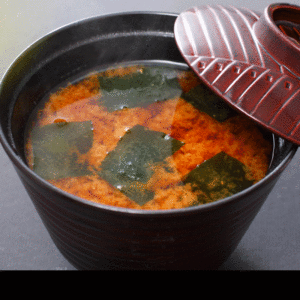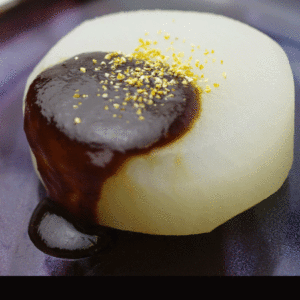Miso is a traditional Japanese seasoning and health food that has been an integral ingredient in Japanese cooking for centuries. This thick, savory fermented soybean paste is high in protein, rich in umami, and incredibly versatile.
Miso exemplifies the many health benefits of fermented foods, being rich with enzymes, vitamins, minerals, anti-oxidants, and essential amino acids. Traditional miso is fermented for long periods in large wooden casks, which provide an ideal environment for bacterial cultures to thrive. This serves not only to develop the aroma, flavor, and color, but also to impart the miso with its high nutritional value. During the fermentation process, the koji generates active enzymes, which aid digestion and support immune system health. Unpasteurized miso is thought to contain more of these beneficial enzymes than pasteurized miso.Show more...
Where did miso come from?
Japanese people have valued miso since ancient times, at first as a seasoning with excellent preservative qualities, and increasingly because of its intense, umami-rich taste, and appetizing aroma.
Miso is believed to have developed from a group of fermented foods which originated in China. It was introduced to Japan in the 7th century from either China or the Korean Peninsula. At first, it was a delicacy that was limited strictly to Imperial courtiers and Buddhist monks. But over time consumption of miso spread, and by the sixteenth century miso and miso soup were being enjoyed by the samurai class and by commoners. The increasing popularity of miso led to the development of various grades and types. In this way, miso, alongside shoyu, became integral to the development of Japanese cuisine.
What is special about Mitoku’s miso?
The introduction of modern machinery has had a significant impact on miso production in Japan. Machinery was introduced to enhance efficiency and productivity in the miso manufacturing process, leading to increased production volumes and lower cost. Large manufacturers prospered, overwhelming smaller miso producers. As a result, small producers still using traditional methods inherited from previous generations have become a rarity.
Today, miso is well-established as a delicious and versatile superfood and its global popularity continues to increase. At Mitoku, we work closely with long-established producers in order to deliver high-grade miso full of the beneficial qualities which only come from traditional practices and long fermentation. Our miso range is organic and free from GMO and chemical additives. This commitment to authenticity is what makes our miso so different from mass market products, which are made in high volumes using artificial maturation processes and additives.
How many varieties are there?
The process of making miso is seemingly very simple: soybeans, salt, and koji are mixed and left to ferment. In practice, however, there is rich variety in miso, created by changes in the length of fermentation and aging, the ingredients of the koji, the ratio of the ingredients, the quality of the water, and the climate in which the miso is made. In fact, there are believed to be more than 1,300 varieties in Japan today. Each variety of miso represents a unique blend of the five tastes, umami, saltiness, sweetness, sourness, and bitterness, harmonized together by the fermentation process.
Miso varieties which are dark chocolate-brown or reddish-brown in color tend to be rich, deep, and hearty in flavor. Paler miso usually tastes sweet and creamy, although there are some saltier varieties. In general, miso can be divided into three main categories, according to the grain used to cultivate the koji: rice miso, barley miso, and soy miso.
At Mitoku, we have an extensive selection including Hatcho Miso, which is aged for over two years and still made using a method almost unchanged since the fifteenth century. We also supply brown rice miso, barley miso, sweet white miso, instant miso soups and freeze-dried miso powder.





